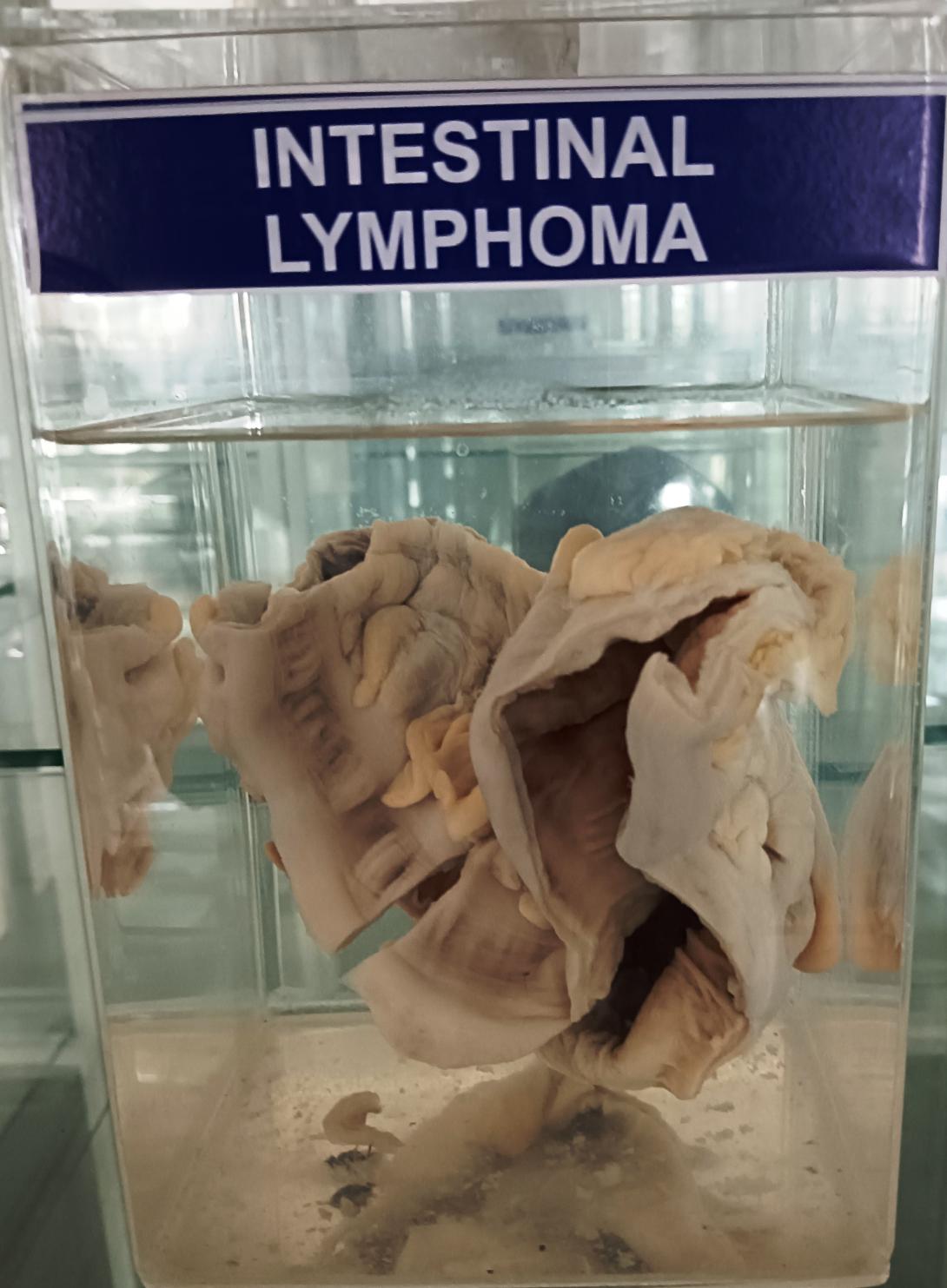Intestinal lymphoma is a type of cancer that affects the lymphatic tissue in the intestine. Here are some anatomy points related to intestinal lymphoma:
- Intestinal lymphoma can occur in any part of the gastrointestinal tract, including the small intestine, large intestine, and rectum.
- The lymphatic tissue in the intestinal wall is called the gut-associated lymphoid tissue (GALT). This tissue plays an important role in immune function and helps protect the body from harmful bacteria and viruses.
- The most common type of intestinal lymphoma is non-Hodgkin's lymphoma (NHL), which can be further classified into several subtypes based on the type of lymphocyte involved.
- Symptoms of intestinal lymphoma may include abdominal pain, bloating, diarrhea, constipation, weight loss, and fatigue. These symptoms may be similar to other gastrointestinal conditions, so it is important to get a proper diagnosis.
- Diagnosis of intestinal lymphoma typically involves a combination of imaging tests, such as CT or MRI scans, and biopsy samples of the affected tissue.
- Treatment for intestinal lymphoma may include chemotherapy, radiation therapy, and surgery. The specific treatment plan will depend on the type and stage of the cancer.
- Prognosis for intestinal lymphoma varies depending on the type and stage of the cancer, but early detection and treatment can improve outcomes. Regular follow-up care is important for monitoring the cancer and managing any side effects of treatment
Rack Number
Specimen Number
34

